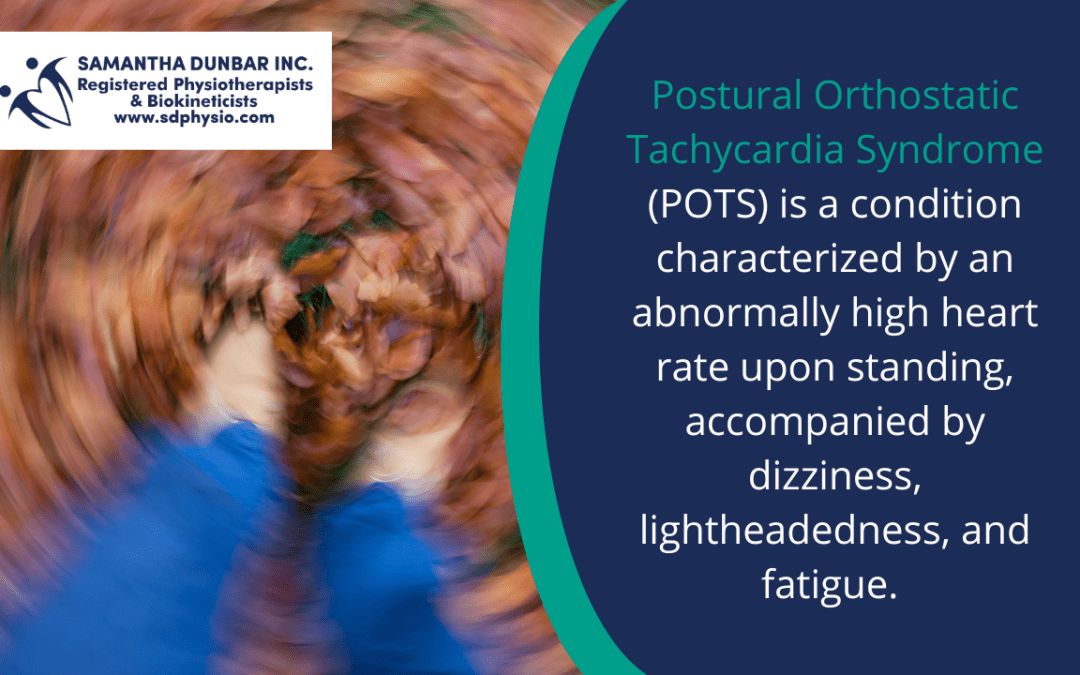Postural Orthostatic Tachycardia Syndrome (POTS) is a condition characterized by an abnormally high heart rate when standing up, often accompanied by symptoms such as dizziness, lightheadedness, and fatigue.
POTS is a blood circulation disorder characterized by two factors:
· A specific group of symptoms that frequently occur when standing upright
· A heart rate increase from horizontal to standing (or as tested on a tilt table) of at least 30 beats per minute in adults, or at least 40 beats per minute in adolescents, measured during the first 10 minutes of standing
POTS is diagnosed only when orthostatic hypotension is ruled out and when there is no acute dehydration or blood loss. Orthostatic hypotension is a form of low blood pressure: 20mm Hg drop in systolic or a 10mm Hg drop in diastolic blood pressure in the first three minutes of standing upright.
It can significantly impact a patient’s quality of life and ability to perform daily activities. One of the key components of managing POTS is educating patients about their condition and teaching them strategies to help manage their symptoms.
This may include lifestyle modifications such as increasing fluid intake, wearing compression garments, and exercising regularly. Patients need to understand the role of these interventions in improving their symptoms and overall well-being.
In addition to lifestyle modifications, physiotherapy can play a crucial role in the management of POTS. Physiotherapists can work with patients to develop individualized exercise programs aimed at improving cardiovascular fitness and strengthening muscles to help support proper posture. They can also teach patients techniques to improve their breathing and reduce anxiety symptoms. Furthermore, physiotherapists can use manual therapy techniques such as massage and joint mobilization to help alleviate musculoskeletal pain and tension contributing to a patient’s symptoms.
By addressing these physical components of POTS, physiotherapists can help patients improve their functional abilities and quality of life. Managing POTS requires a multidisciplinary approach that may include input from physicians, dietitians, and other healthcare professionals.
Physiotherapists play a vital role in this team, helping patients to understand their condition better and develop strategies to manage their symptoms effectively. By working with patients, we can help them improve their quality of life and achieve their goals despite the challenges posed by POTS.
References:
Cleveland Clinic (2022). Postural orthostatic tachycardia syndrome (POTS). [online] Cleveland Clinic. Available at: https://my.clevelandclinic.org/health/diseases/16560-postural-orthostatic-tachycardia-syndrome-pots.
John Hopkins Medicine (2019). Postural Orthostatic Tachycardia Syndrome (POTS). [online] John Hopkins Medicine. Available at: https://www.hopkinsmedicine.org/health/conditions-and-diseases/postural-orthostatic-tachycardia-syndrome-pots.
www.msn.com. (n.d.). MSN. [online] Available at: https://www.msn.com/en-za/health/condition/in-postural-tachycardia-syndrome-(pots)/in-postural-tachycardia-syndrome-(pots)?source=bing_condition [Accessed 2 Jun. 2024].Report this













